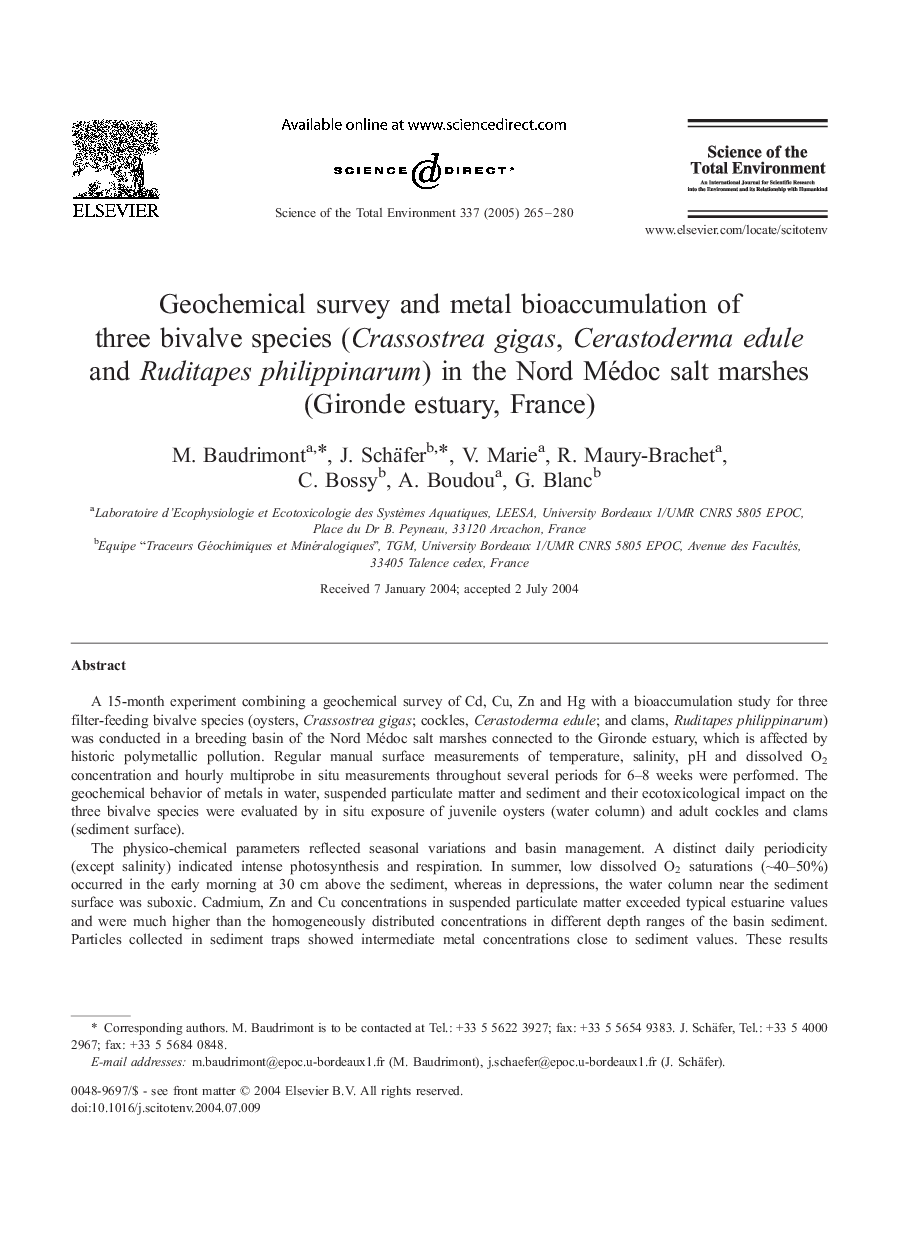| Article ID | Journal | Published Year | Pages | File Type |
|---|---|---|---|---|
| 10111017 | Science of The Total Environment | 2005 | 16 Pages |
Abstract
The physico-chemical parameters reflected seasonal variations and basin management. A distinct daily periodicity (except salinity) indicated intense photosynthesis and respiration. In summer, low dissolved O2 saturations (â¼40-50%) occurred in the early morning at 30 cm above the sediment, whereas in depressions, the water column near the sediment surface was suboxic. Cadmium, Zn and Cu concentrations in suspended particulate matter exceeded typical estuarine values and were much higher than the homogeneously distributed concentrations in different depth ranges of the basin sediment. Particles collected in sediment traps showed intermediate metal concentrations close to sediment values. These results suggest trace metal recycling due to reductive dissolution under suboxic conditions at the sediment surface resulting in trace metal release to the water column and adsorption onto suspended particles. Dissolved Cd, Zn and Hg concentrations (e.g. 13-136 ng lâ1; 0.3-25.1 μg lâ1 and 0.5-2.0 ng lâ1, respectively) in the basin corresponded to the concentration range typically observed in the Gironde estuary, except for some maximum values attributed to metal recycling. In contrast, dissolved Cu concentrations (1.08-6.08 μg lâ1) were mostly higher than typical estuarine values, probably due to recycled Cu complexation by dissolved organic matter. Growth, bioaccumulation rates and kinetics in the whole soft body of the bivalves were analyzed every 40 days. Although Cd bioaccumulation of oysters was lower in the basin than in the estuary during the same period (27,000 ng gâ1, dry weight and 40,000 ng gâ1, respectively) these values are largely above the new human consumption safety level (5000 ng gâ1, dw; European Community, 2002). For cockles and clams, Cd bioaccumulation was lower, reaching 1400 ng gâ1 and 950 ng gâ1, respectively. Similar results were obtained for Zn and Cu suggesting physiological differences between the species and/or differences in the exposure of the organisms due to physico-chemical conditions and metal distribution between dissolved and particulate phases. In contrast, Hg bioaccumulation was highest for cockles reaching bioconcentration factors of â¼200,000, which even exceeded that of Cd in oysters (50,000) for the same exposition period. Nevertheless, Hg concentrations remained relatively low in the three bivalve species.
Keywords
Related Topics
Life Sciences
Environmental Science
Environmental Chemistry
Authors
M. Baudrimont, J. Schäfer, V. Marie, R. Maury-Brachet, C. Bossy, A. Boudou, G. Blanc,
